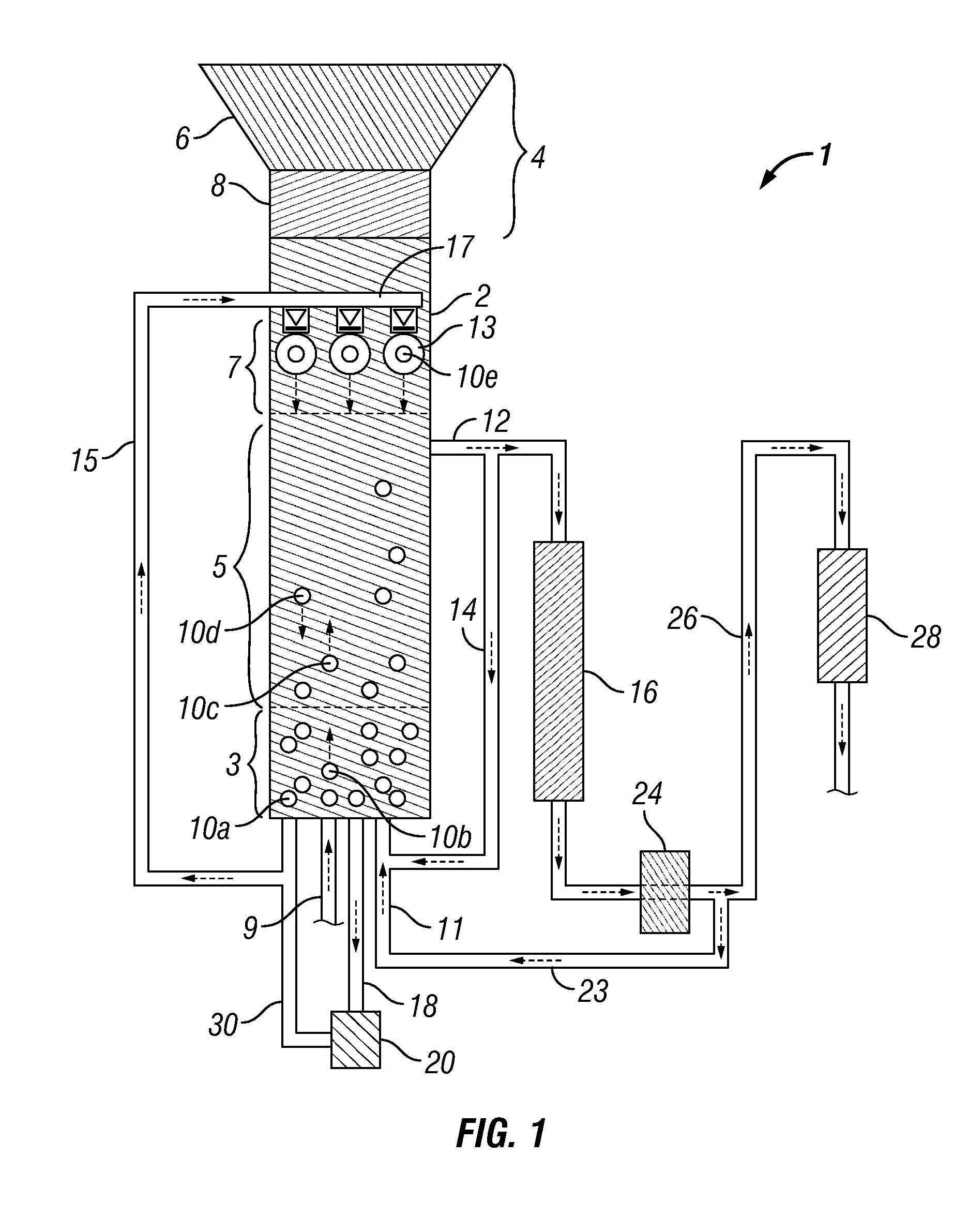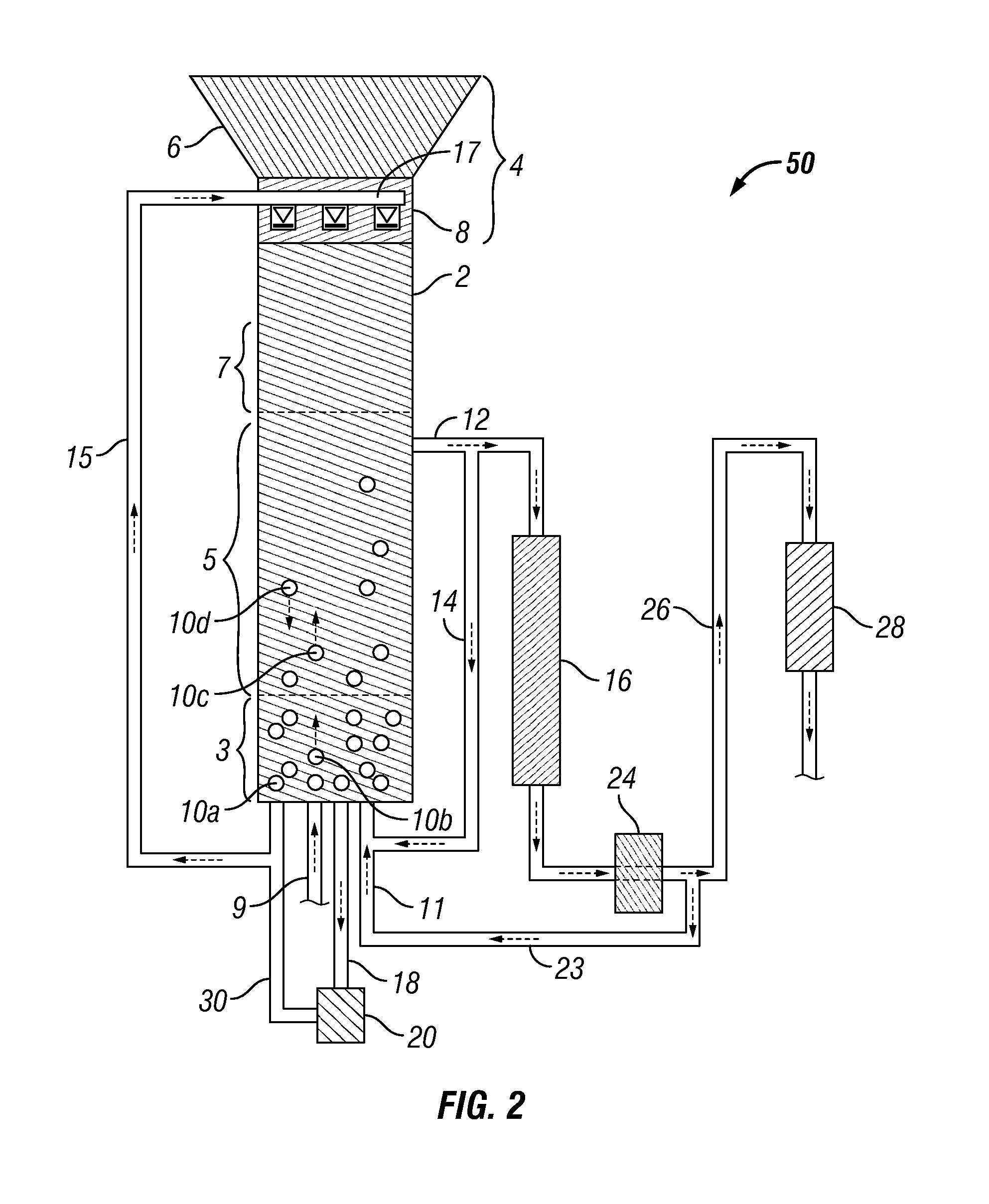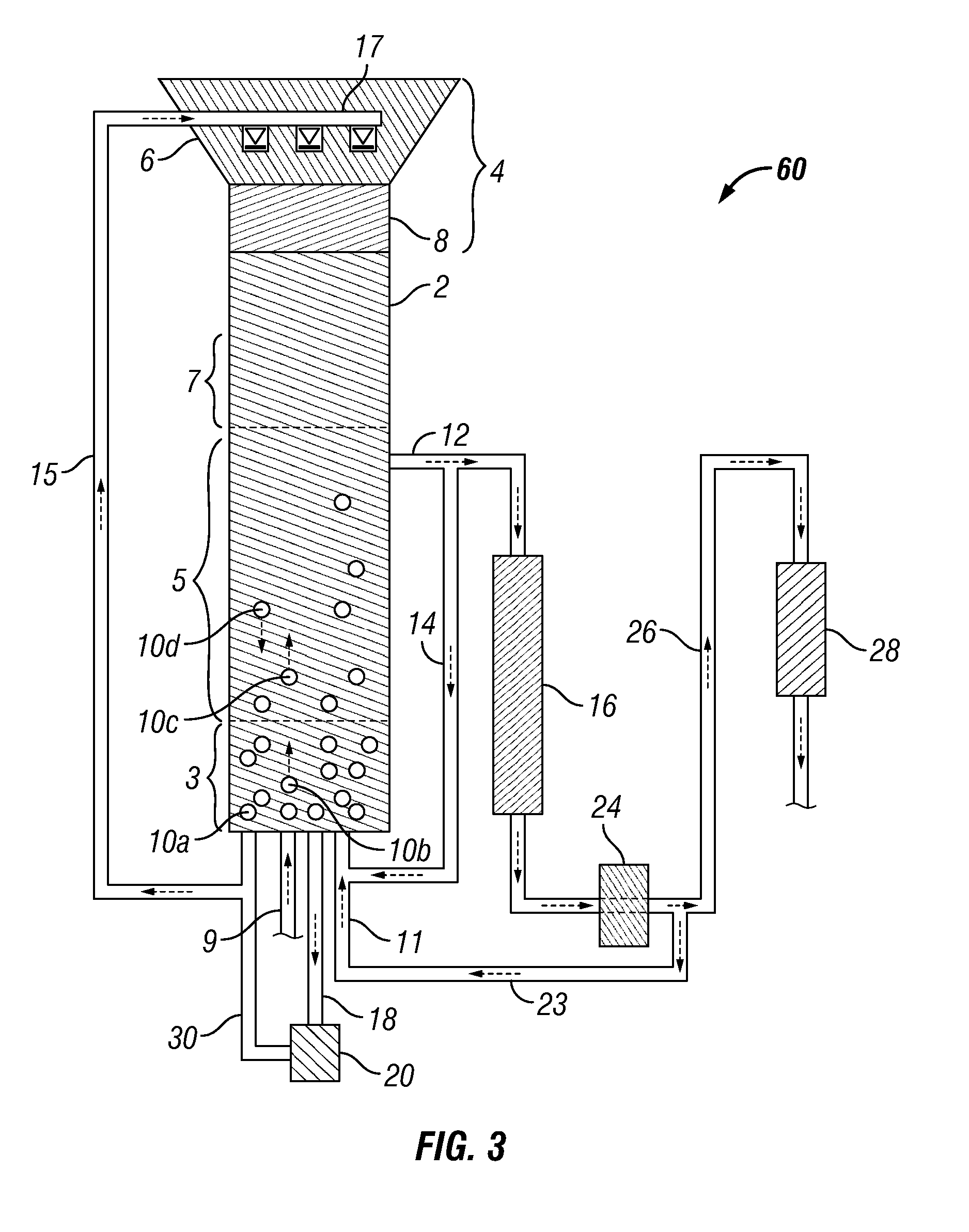Methods and systems for distributing a slurry catalyst in cellulosic biomass solids
a cellulosic biomass and catalyst technology, applied in the direction of waste based fuel, hydrocarbon oil treatment products, other chemical processes, etc., can solve the problems of slow development and implementation of bio-based fuel technology, difficult processing of lignin, and especially difficult to deal with lignin
- Summary
- Abstract
- Description
- Claims
- Application Information
AI Technical Summary
Benefits of technology
Problems solved by technology
Method used
Image
Examples
example 1
Formation of a Phenolics Liquid Phase
[0120]A 450 mL Parr reactor fitted with glass liner was charged with 190 grams of 50% glycerol in deionized water solvent. 0.62 grams of potassium carbonate was added as buffer, together with 2.44 grams of sulfided nickel oxide-promoted cobalt molybdate catalyst (DC-2534, Criterion Catalyst Technologies L.P., containing 1-10% cobalt oxide and molybdenum trioxide (up to 30 wt. %) on alumina, and less than 2% nickel). The catalyst was previously sulfided as described in United States Patent Application Publication 2010 / 0236988, which is incorporated herein by reference in its entirety. The reactor was then charged with 19.5 grams of southern pine mini-chips (39% moisture) having a nominal size of 3 mm×4 mm×5 mm and pressurized with 765 psia of hydrogen. The stirred reactor was heated to 190° C. for 1 hour before ramping over 15 minutes to a temperature of 250° C. for 2 hours, followed by a ramp to 270° C. to complete a 5 hour total cycle for digest...
example 2
Viscosity of the Phenolics Liquid Phase
[0122]The bottoms phase sample was reheated to 90° C. in a block heater, and its viscosity was measured by a falling film method. The measured viscosity was visually observed to be less than 1000 cP.
example 3
Terminal Velocity of the Phenolics Liquid Phase Through a Static Column of Water
[0123]An 8 dram vial of deionized water with 2% acetone was heated to 92° C. in a block heater. The phenolics liquid phase from Example 1 was also heated to 92° C., and a 4 mm droplet was placed into the heated water. The droplet fell immediately to the bottom of the vial at a velocity greater than 8 mm per second.
PUM
| Property | Measurement | Unit |
|---|---|---|
| temperatures | aaaaa | aaaaa |
| temperatures | aaaaa | aaaaa |
| size | aaaaa | aaaaa |
Abstract
Description
Claims
Application Information
 Login to View More
Login to View More - R&D
- Intellectual Property
- Life Sciences
- Materials
- Tech Scout
- Unparalleled Data Quality
- Higher Quality Content
- 60% Fewer Hallucinations
Browse by: Latest US Patents, China's latest patents, Technical Efficacy Thesaurus, Application Domain, Technology Topic, Popular Technical Reports.
© 2025 PatSnap. All rights reserved.Legal|Privacy policy|Modern Slavery Act Transparency Statement|Sitemap|About US| Contact US: help@patsnap.com



